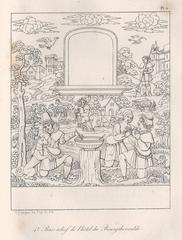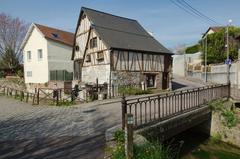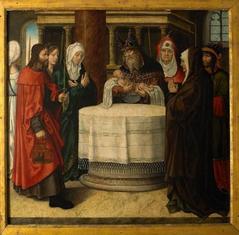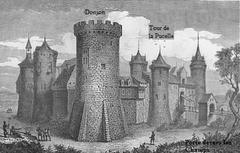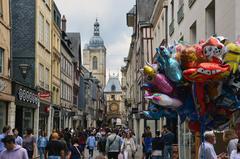
Jardin des Plantes de Rouen: Visiting Hours, Tickets, and Historical Sites Guide
Date: 04/07/2025
Introduction
Nestled in the heart of Rouen, the Jardin des Plantes de Rouen stands as a distinguished botanical garden and cultural landmark, seamlessly blending over three centuries of rich history with vibrant horticultural diversity. Originally established in 1691 as a private aristocratic estate, the garden evolved into a public space in the 19th century and now spans approximately 8.5 hectares. It houses more than 5,600 plant species, including a nationally recognized collection of fuchsias, and serves as both a sanctuary for plant conservation and a vibrant hub for cultural events. With free admission, full wheelchair accessibility, and proximity to Rouen’s most iconic attractions, the garden welcomes both locals and tourists for exploration, education, and relaxation (mycityhunt.co.uk; rouen.fr; Tourist Platform; whichmuseum.com).
Table of Contents
- Introduction
- Historical Evolution
- Preservation, Education, and Community Engagement
- Monuments and Cultural Heritage
- Practical Visitor Information
- Garden Highlights and Themed Areas
- Seasonal Events and Biodiversity
- Nearby Attractions and Travel Tips
- FAQ
- Conclusion and Call to Action
- References
Historical Evolution
Early Private Estates (17th–18th Centuries)
The origins of the Jardin des Plantes de Rouen date back to 1691 when Louis de Carel acquired land from the Rouvray forest, enclosing it with walls and constructing a pavilion that survives to this day (mycityhunt.co.uk). The estate changed hands several times—most notably belonging to Scottish financier John Law and later Madame Marie Planterose, after whom the garden was once named. During this period, the site was a private retreat, reflecting the tastes of its elite owners. The original 17th-century pavilion now hosts exhibitions and links visitors to the garden’s aristocratic roots.
Transition to Public Garden (19th Century)
In 1832, the city of Rouen purchased the estate to relocate the existing botanical garden, founded by local physicians in 1735 (pop.culture.gouv.fr). By 1836, the new public garden was officially established, featuring a combination of landscaped park and formal botanical sections. Notable structures include the central greenhouse (1839–1842), restored in 1999, and the Orangerie (1895–1896). These buildings continue to serve as venues for cultural and artistic events (mycityhunt.co.uk).
Botanical Expansion (19th–20th Centuries)
The garden expanded throughout the 19th and 20th centuries, now covering about 8.5 hectares, with eight hectares open to the public (jardindeliliane.com). Its greenhouses—including the palmarium and tropical houses—have been periodically renovated, most recently in 2020, to display rare and exotic species. The fuchsia collection (more than 990 species and varieties) holds a prestigious National Collection label (jardindeliliane.com).
Preservation, Education, and Community Engagement
The Jardin des Plantes de Rouen is both a neighborhood park and a center for botanical research and education. It offers guided tours, educational workshops (including greenhouse activities for children), and seasonal events to foster public appreciation of plant heritage (mycityhunt.co.uk). The garden’s dual layout—landscaped and formal sections—features thematic beds such as the rose garden, medicinal squares, and ornamental collections (cityzeum.com).
Monuments and Cultural Heritage
Throughout the garden, visitors will find monuments and statues that reflect Rouen’s local and international history. Notable examples include a bust of Eugène Noël by Alphonse Guilloux (1905), a rune stone from Norway marking the Norman Millennium, and “Migrations,” a bronze sculpture by Georges Schneider (mycityhunt.co.uk). These artistic features enhance the garden’s cultural landscape.
Practical Visitor Information
Visiting Hours and Tickets
- Hours: Open daily. From May to August, 8:00 am–8:15 pm; shorter hours in winter.
- Tickets: Free admission for all. Special exhibitions in the pavilion or Orangerie may require a separate ticket (whichmuseum.com; rouen.fr).
Accessibility
- Fully wheelchair- and stroller-accessible with paved paths.
- Accessible restrooms and rest areas available.
Amenities
- Playgrounds, carousel, pond for model boats, bandstand, and seasonal snack kiosks.
- Drinking fountains and picnic areas.
- Educational signage in French and often English.
Location and Transportation
- Located at 7, rue de Trianon, near Rouen’s city center.
- Accessible by public transport (Fast F1 and F9 bus lines stop nearby).
- Limited parking; public transportation recommended (rouen.fr).
Garden Highlights and Themed Areas
- Systematic Garden: Plants arranged by evolutionary relationships (francerent.com).
- Medicinal & Aromatic Garden: Historic healing herbs with educational panels.
- Rose Garden: Over 1,000 varieties, best seen late spring/early summer (whichmuseum.com).
- Conservatory & Greenhouses: Historic central greenhouse (1839–1842); tropical, subtropical, and Mediterranean plants (rouen.fr; pariscotejardin.fr).
- Orchard & Vegetable Garden: Regional fruit and vegetable varieties.
- Bee & Honey Garden: Beehives and pollinator-friendly plantings with family workshops (triphobo.com).
- Water Features & Ponds: Ponds with aquatic plants and wildlife (normandielovers.fr).
- Arboretum: Mature native and exotic trees, including rare specimens (rouen.fr).
- 17th-Century Pavilion: Venue for exhibitions and community events (explore.com).
- Aviary: Exotic birds for family enjoyment (triphobo.com).
Seasonal Events and Biodiversity
- Spring: Wisteria, irises, camellias, and rhododendrons.
- Summer: Rose garden in bloom, lawn events, outdoor concerts.
- Autumn: Spectacular foliage, fruit harvests.
- Winter: Greenhouses open with tropical plants (The Crazy Tourist).
- Annual Event: Graines de Jardin festival in May—over 40,000 visitors, with exhibitors, workshops, and performances (pariscotejardin.fr).
- Wildlife: Home to birds, bees, squirrels, hedgehogs, and aquatic species.
Nearby Attractions and Travel Tips
- Historic Sites: Rouen Cathedral, Gros Horloge, Museum of Fine Arts, Seine riverfront (The Crazy Tourist).
- Travel Tips:
- Visit in spring/summer for peak blooms.
- Early mornings and weekdays are quieter.
- Bring comfortable shoes, camera, and picnic supplies.
- Use public transport to avoid parking hassles (rouen.fr).
FAQ
Q: What are the Jardin des Plantes de Rouen visiting hours?
A: Open daily, 8:00 am–8:15 pm in summer; shorter hours in winter. Check the official website for updates.
Q: Is there an entry fee?
A: No, entry is free for all.
Q: Are guided tours available?
A: Yes, guided tours and workshops are offered regularly and may require advance registration.
Q: Is the garden wheelchair accessible?
A: Yes, with paved paths and accessible amenities.
Q: Are pets allowed?
A: Only assistance animals are permitted.
Q: Is parking available?
A: Limited street parking; public transportation is preferred.
Conclusion and Call to Action
The Jardin des Plantes de Rouen is a living chronicle of botanical, architectural, and cultural evolution, offering a tranquil escape, educational opportunities, and vibrant community events. Whether you seek a peaceful stroll, engaging workshop, or a day immersed in Rouen’s green and historical heritage, this garden is a must-visit. For the latest updates, event schedules, and guided tours, visit the official website or download the Audiala app. Follow us on social media and explore related articles to enhance your Rouen experience!
References
- Jardin des Plantes de Rouen – MyCityHunt
- Jardin des Plantes de Rouen – Pop Culture Gouv
- Jardin des Plantes de Rouen – Jardin de Liliane
- Jardin des Plantes de Rouen – CityZeum
- Jardin des Plantes de Rouen – Rouen.fr
- A Peaceful Escape in Rouen: Jardin des Plantes – Tourist Platform
- Jardin des Plantes de Rouen – WhichMuseum
- Graines de Jardin Festival – Paris Côté Jardin
- Jardin des Plantes de Rouen – The Crazy Tourist


